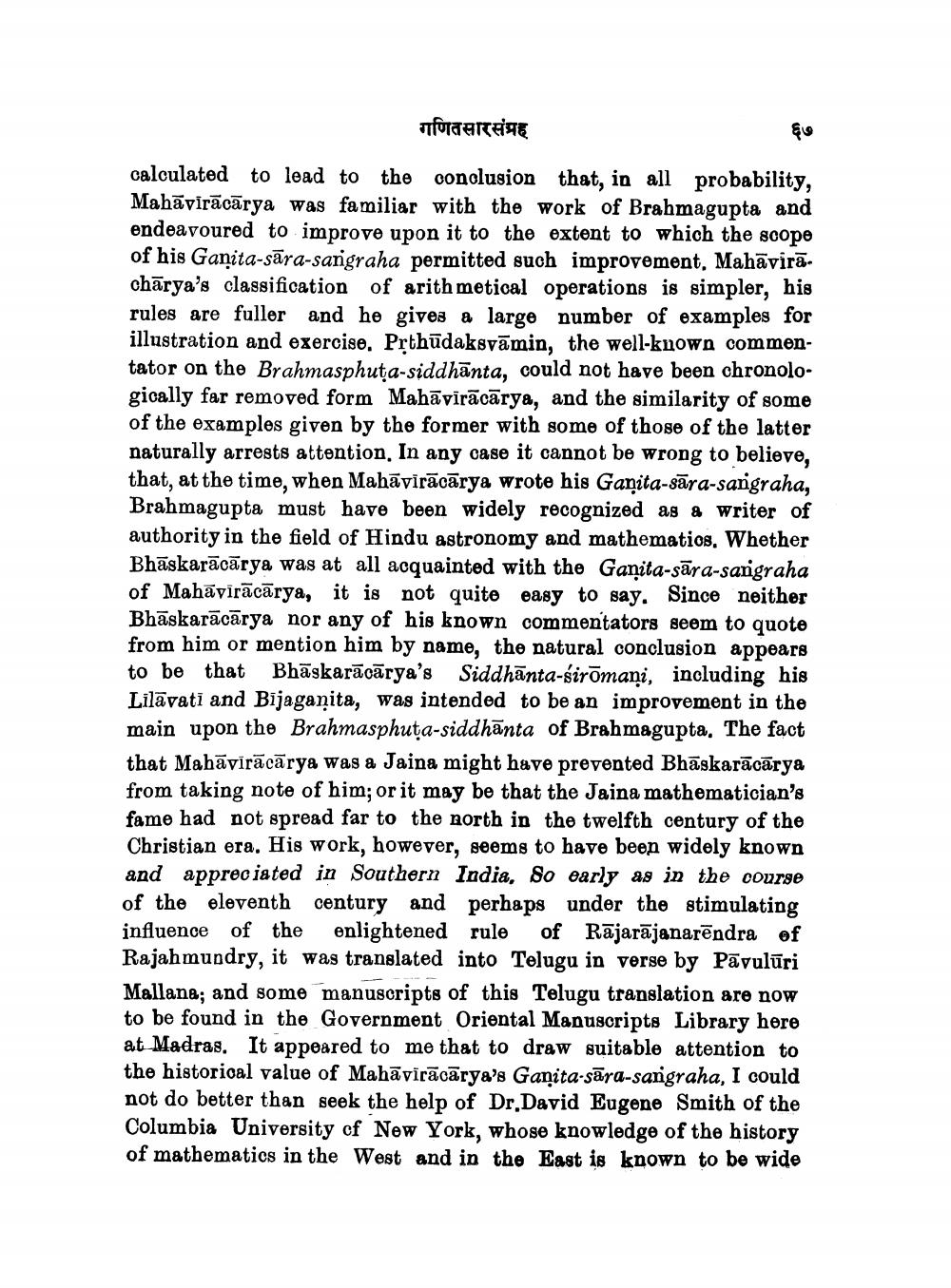________________
गणितसारसंग्रह
calculated to lead to the conclusion that, in all probability, Mahāvirācārya was familiar with the work of Brahmagupta and endeavoured to improve upon it to the extent to which the scope of his Ganita-sāra-sangraha permitted such improvement, Mahāvirā. chārya's classification of arithmetical operations is simpler, his rules are fuller and he gives a large number of examples for illustration and exercise, Prthūdaksvāmin, the well-known commentator on the Brahmasphuta-siddhānta, could not have been chronologically far removed form Mahāvīrācārya, and the similarity of some of the examples given by the former with some of those of the latter naturally arrests attention. In any case it cannot be wrong to believe, that, at the time, when Mahāvīrācārya wrote his Gaạita-sāra-sangraha, Brahmagupta must have been widely recognized as a writer of authority in the field of Hindu astronomy and mathematios. Whether Bhāskarācārya was at all acquainted with the Ganita-sāra-sangraha of Mahāvīrācārya, it is not quite easy to say. Since neither Bhaskarācārya nor any of his known commentators seem to quote from him or mention him by name, the natural conclusion appears to be that Bhāskarācārya's Siddhānta-sirūmani, including his Lilāvati and Bījagamita, was intended to be an improvement in the main upon the Brahmasphuta-siddhānta of Brahmagupta. The fact that Mahāvīrācārya was a Jaina might have prevented Bhāskarācārya from taking note of him; or it may be that the Jaina mathematician's fame had not spread far to the north in the twelfth century of the Christian era. His work, however, seems to have been widely known and appreciated in Southern India, so early as in the course of the eleventh century and perhaps under the stimulating influence of the enlightened rule of Rājarājanarēndra of Rajahmundry, it was translated into Telugu in verse by Pāvulāri Mallana; and some manuscripts of this Telugu translation are now to be found in the Government Oriental Manuscripts Library here at Madras. It appeared to me that to draw suitable attention to the historical value of Mahāvīrācārya's Ganita.sāra-sangraha, I could not do better than seek the help of Dr. David Eugene Smith of the Columbia University of New York, whose knowledge of the history of mathematics in the West and in the East is known to be wide




